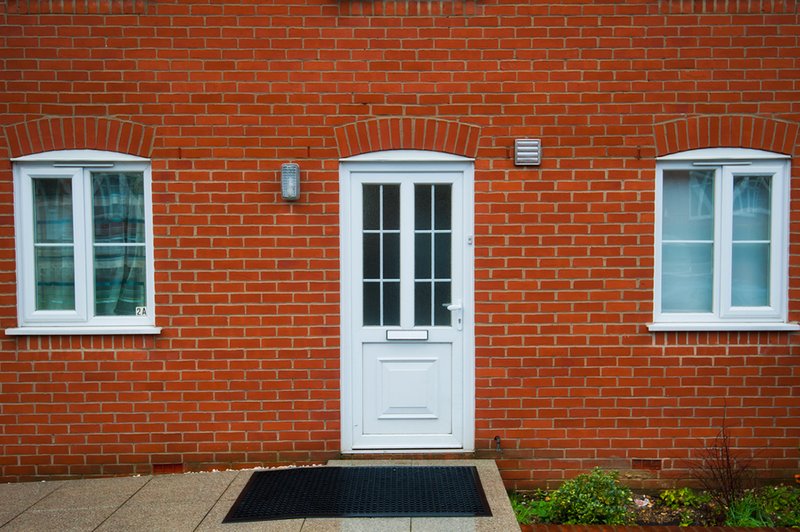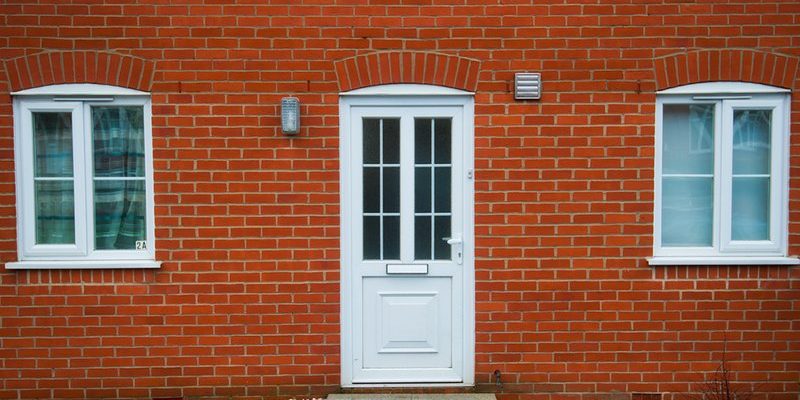
Most folks expect their exterior doors—whether it’s a classic wooden Craftsman, a modern steel model, or something from a big brand like Therma-Tru or Masonite—to shut out the weather and keep everything snug inside. But if your door is letting in light, air, or even a whiff of last night’s barbecue smoke from next door, it’s a sign that it’s not syncing up tightly with the frame. Let me explain exactly why that happens, what it means, and what you can do about it—no need to call in the pros just yet.
What Causes Light to Show Around an Exterior Door?
You might be wondering why your door, which seemed perfectly fine when you moved in, suddenly looks like it’s parting ways with the frame. Here’s the thing: houses settle, materials shift, and weatherstripping gets tired over time. If you see light coming in around the edges, it usually means there’s a *gap*—and that gap is the main culprit.
Common causes for these gaps include:
- Worn or compressed weatherstripping: The soft rubber or foam that lines your door frame can flatten or tear after years of squishing shut.
- Poor installation or settling: If the door wasn’t installed perfectly—or if the house has shifted a bit—gaps can open along the sides or at the bottom.
- Temperature and humidity changes: Wood doors can swell or shrink, and even metal or fiberglass doors can move slightly through the seasons.
- Bent or warped frames: Sometimes the door itself is fine, but the frame is out of sync—bent from age, water damage, or just rough treatment.
So, when you see that light, it’s your door’s not-so-subtle way of asking for some troubleshooting and maybe a little love.
Why Is It a Problem If Light Shows Through?
It’s easy to think: “It’s only a little light—what’s the big deal?” Honestly, that tiny gap acts like an open invitation for all sorts of annoyances. First up, there’s energy loss. If you can see light, air can absolutely get through. It’s like your home is trying to reset its own temperature, making your heater or AC work overtime.
But let’s not stop there. Other issues include:
- Drafts and discomfort: That gap brings chilly drafts in winter and sweltering air in summer, leaving you reaching for the thermostat.
- Bugs and dust: If light can sneak in, so can gnats, spiders, and pollen. Not exactly what you want coming through your front door.
- Security concerns: A door with visible gaps might be easier to pry open, making your house less secure than you’d like.
- Moisture intrusion: On stormy nights, those little gaps can let water drip or blow in, leading to long-term damage or musty odors.
So, seeing that daylight is more than just an eyesore—it’s like your door’s version of a “check engine” light.
How to Diagnose Where the Light Is Coming From
Sometimes you see a bright line at the bottom; other times, it’s a faint glow along the sides or top. Pinpointing where the light shows is the first step to a proper fix. Start by turning off the lights inside at dusk and looking from the outside in. If you’ve got a helper with a flashlight, it makes this little test even easier.
Here are some spots to check:
- Bottom of the door: Sweep your hand along the threshold—does it feel breezy? A worn door sweep or a misaligned threshold is often the culprit here.
- Sides (jambs): Press lightly on the edges—does the door wiggle or move? That’s a sign it’s not fitting tightly, maybe due to old weatherstripping or a warped frame.
- Top edge: Light at the top might mean the hinges are sagging or the door is slightly out of square.
If you have something like a remote-controlled door lock from a brand like August or Schlage, make sure the door is fully closed and latched—it’s amazing how often a clicky lock can mask the fact that the door isn’t actually tight against the seals.
Common Fixes for Light Around Your Exterior Door
Once you’ve figured out where the light is coming through, it’s time to get hands-on. You don’t need to be a pro to tackle most of these fixes—just a little patience and the right parts. Let me run down the top solutions.
Replace the weatherstripping: This is often the first place to start. Most big-box stores sell universal kits that are easy to cut and fit. Peel off the old, sticky stuff, clean the area, and press the new strip into place. Feel along the edges to make sure it’s sealing tight.
Add or adjust a door sweep: If the bottom is the problem, swap out the old sweep or install an adjustable one. Some sweep designs slide on, others screw into the bottom edge. Make sure it brushes the threshold but doesn’t drag.
Realign the door: If hinges are loose or sagging, tighten them up. Sometimes, you’ll need to shim a hinge or swap in longer screws that reach the framing. This helps “reset” the door so it sits flush.
Upgrade the threshold: In stubborn cases, the threshold itself may need tweaking or replacing. Many thresholds have adjustable screws—try raising or lowering it in tiny steps until the light disappears.
Every fix is a step towards better energy savings, comfort, and security. Take it slow, test after each step, and don’t be afraid to call for backup if something feels out of sync.
Should You Worry About Different Types of Doors or Brands?
Not all doors are created equal. You might notice that a solid-core wooden door from an older home behaves differently than a modern steel or fiberglass model made by Therma-Tru or Masonite. Does that change how you deal with gaps or light leaks? Short answer: a bit, but the basics are the same.
Wooden doors can warp with humidity or age, so you might find gaps appear seasonally. With these, you may need to sand or plane a tiny bit off the edge or add fresh weatherstripping once the weather changes.
Steel and fiberglass doors tend to stay straighter over time, but their frames can still shift or compress. Weatherstripping can wear out or the frame can move from house settling, so don’t rule out repairs.
Brand matters only in terms of replacement parts. Many brands offer branded sweep, threshold, or gasket kits, which can make matching easier. But in most cases, universal parts from the hardware store will sync up just fine.
If your door has built-in smart locks or security sensors, double-check that any adjustments don’t interfere with signal range, code pairing, or battery access. Sometimes, a rubber seal can block remote features or get in the way of auto-locks. Test it before you call the job done.
When to DIY and When to Call a Pro
Here’s where some honest self-reflection comes in. There’s nothing wrong with a little home troubleshooting, but you don’t want to accidentally turn a small job into a big headache. Changing weatherstripping, adjusting sweeps, or tightening hinges are all beginner-friendly fixes. If you enjoy a little hands-on problem solving, grab your screwdriver and get started.
But if you notice:
- The frame is badly warped or there’s water damage around the jambs
- The door won’t latch securely even after adjustments
- You see large gaps you can’t “reset” with new seals
…it might be time to call a door specialist or handyman. Sometimes, the frame needs professional repair, or the door just isn’t worth saving. And if you have a high-end smart lock, always double-check that hardware changes don’t void your warranty or mess with code syncing.
If you ever feel stuck, remember: Knowing when to ask for help is part of being a savvy homeowner.
Is It Ever Normal to See Light Around the Door?
This is a fair question, especially if you live in an older house. Some old doors simply don’t fit as tightly as new ones. A faint line of light—so thin you can barely see it—might not be a big deal if you don’t feel drafts or see bugs sneaking in. But if you notice the light growing over time, or if you’re losing heat and comfort, don’t ignore it.
Modern doors from brands like Therma-Tru, Masonite, or JELD-WEN are designed to block light and air. If you see a bright outline, that’s usually a signal that something’s out of alignment or worn down. In most cases, the goal is to have a door that closes with a nice, solid “thunk” and stays in sync with the frame, leaving no gaps for light, air, or critters.
Tips to Prevent Light Leaks in the Future
Once you’ve fixed your current problem, it helps to stay a step ahead. Here’s what I suggest to keep your door working like new:
- Inspect regularly: Check your door every season—especially after wild weather. Look for worn seals and loose screws.
- Keep it clean: Dirt and grime can wear away at weatherstripping. Wipe down the edges and threshold from time to time.
- Lubricate hinges: Stiff or squeaky hinges can throw the door out of alignment. A drop of oil can make a big difference.
- Update when needed: Weatherstripping, sweeps, and thresholds are simple to replace—don’t let old, tired parts undo your hard work.
A little maintenance goes a long way in keeping your door sealed tight and trouble-free.
Closing Thoughts
Seeing light around the edges of your exterior door isn’t something to ignore. It’s your door’s way of telling you it needs a tune-up—maybe a new sweep, fresh weatherstripping, or just a quick hinge adjustment. Whether you’ve got a classic wooden entryway or a modern steel door from a well-known brand, the basics stay the same: keep everything in sync so the inside stays cozy and secure.
Next time you spot that sliver of daylight, take it as a friendly nudge to give your door a little attention. With a bit of troubleshooting and some quick fixes, you can reset your entryway for comfort, savings, and peace of mind.
